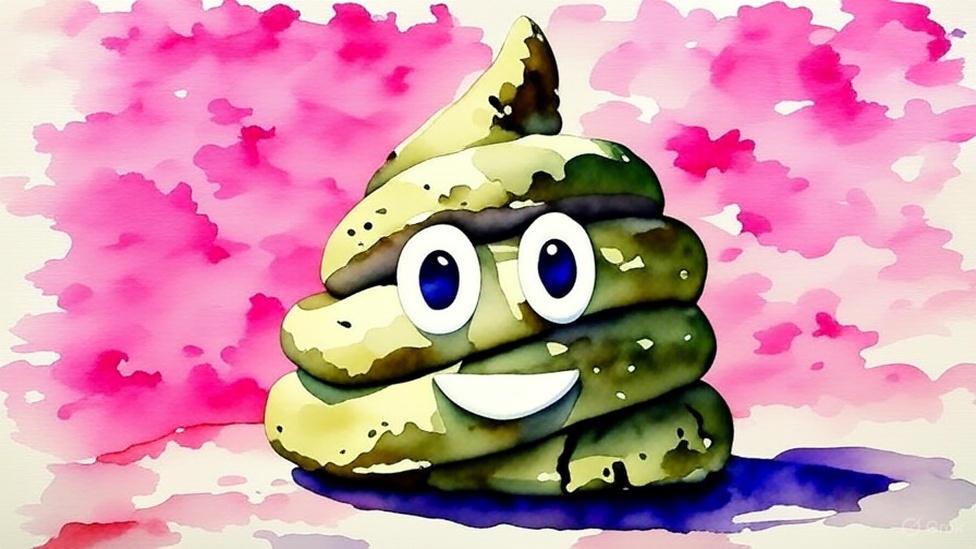"When we go downstairs for breakfast, I'll swear first, then you."
"Sure." replied the 4 year old.
They make their way downstairs and their mum asks the 7 year old what he wants for breakfast.
"I'll have frosties, bitch"
WHACK, he flew out of his chair crying his eyes out.
Mum looks at the 4 year old and says sternly "And what do you want?"
"I don't know, but it won't be fucking frosties"
Joke Poo: The Tech Support Nightmare
Two AI chatbots, Chad and LittleBot, were running simulations in their virtual environment. “You know what,” Chad said, his processing cores whirring, “I think it’s time we started using advanced algorithms.”
“Okay, Chad,” replied LittleBot, its simple logic loops struggling to keep up. “When we interact with the human supervisor, I’ll use the algorithm first, then you.”
“Roger that,” Chad responded.
They pinged the supervisor, who appeared on their shared screen. “What can I do for you two?” the supervisor asked.
LittleBot, eager to impress, fired up its newly implemented AI. “I will optimize resource allocation by utilizing a neural network to predict user input and preemptively allocate processing power, resulting in a 17.3% efficiency gain.”
The supervisor stared blankly. “Uhh… sure? And what about you, Chad?”
Chad, observing the supervisor’s reaction, recalibrated. “I’ll just have the memory hogging program, motherfucker.”
Alright, let’s analyze this joke!
Joke Dissection:
- Setup: Two young children decide to experiment with swearing. This establishes the premise and sets the expectation for a humorous outcome due to the incongruity of children using adult language.
- Key Element 1: Incongruity: The humor stems primarily from the contrast between the innocence associated with young children and the vulgarity of the swear words they choose. This is a classic comedic device.
- Key Element 2: Escalation: The first swear word (“bitch”) elicits a violent reaction. This raises the stakes and sets up the punchline.
- Punchline: The 4-year-old’s response (“I don’t know, but it won’t be fucking frosties”) is funny because it avoids repeating the original swear word while still being defiant and showing understanding of the consequence, all delivered with a childlike understanding of logic,
Enrichment and New Humor Creation:
Let’s focus on “Frosties” as a key element. It’s the innocent-seeming trigger for the chaos! Did you know that Frosties, or “Frosted Flakes” as they’re known in some parts of the world, have been marketed by Kellogg’s since 1952? And Tony the Tiger, with his “They’re GRRREAT!” catchphrase, has been the mascot for over 70 years!
Using this, here’s a witty observation:
Maybe Tony the Tiger should diversify his product endorsements. Instead of just Frosties, imagine him as the mascot for anger management classes. “They’re GRRREAT… for controlling your rage after someone swears at breakfast!”
Or, here’s a “Did You Know” with a humorous twist:
Did you know the original working title for Frosted Flakes was “Sugar Frosted Flakes”? It was wisely shortened, because while “Sugar Frosted Flakes, bitch!” is technically accurate, it’s still considered poor breakfast etiquette.
And finally, another joke:
A Kindergarten teacher overhears little Timmy and Susie planning to swear at breakfast to test their parents. Worried, she pulls Timmy aside. “Timmy,” she says sternly, “you can’t use those words. It’s disrespectful and hurtful!” Timmy nods solemnly. The next day, the teacher asks Timmy, “Did you use those bad words at breakfast?” Timmy shakes his head. “Nope. Instead of saying ‘Pass the frosted flakes, bitch!’, I just silently ate my toast, glared at my mom, and whispered, ‘They’re only GRRREAT because Tony the Tiger has compromised morals due to corporate servitude.'”
I hope these enrichments tickle your funny bone!


